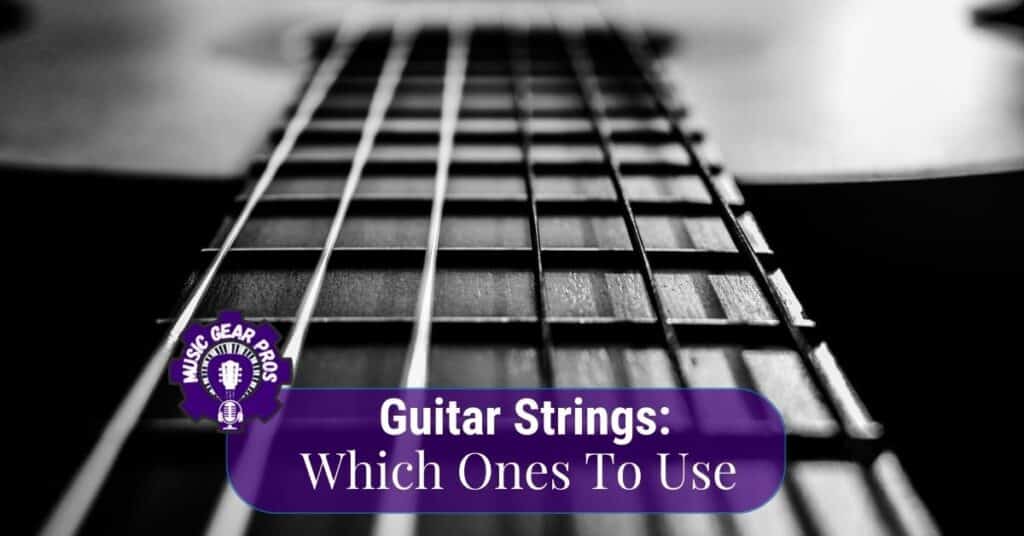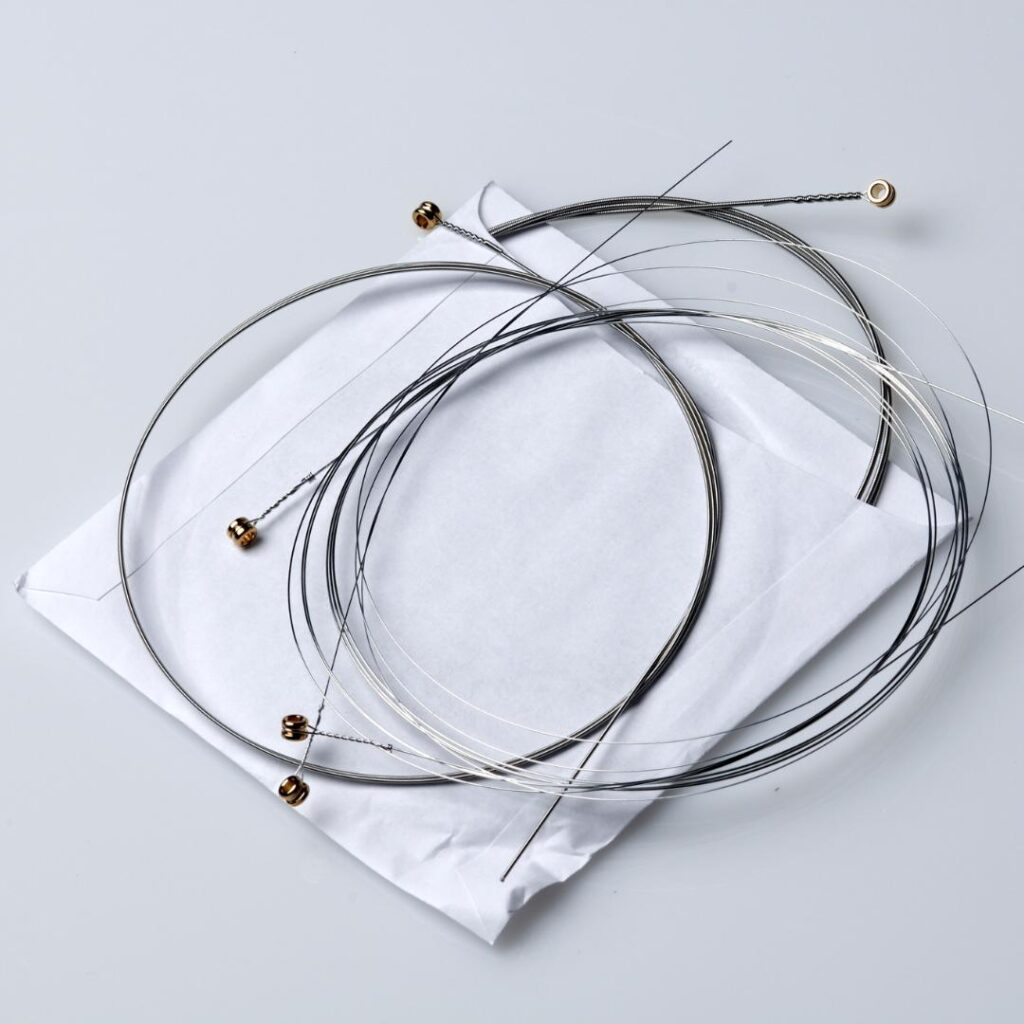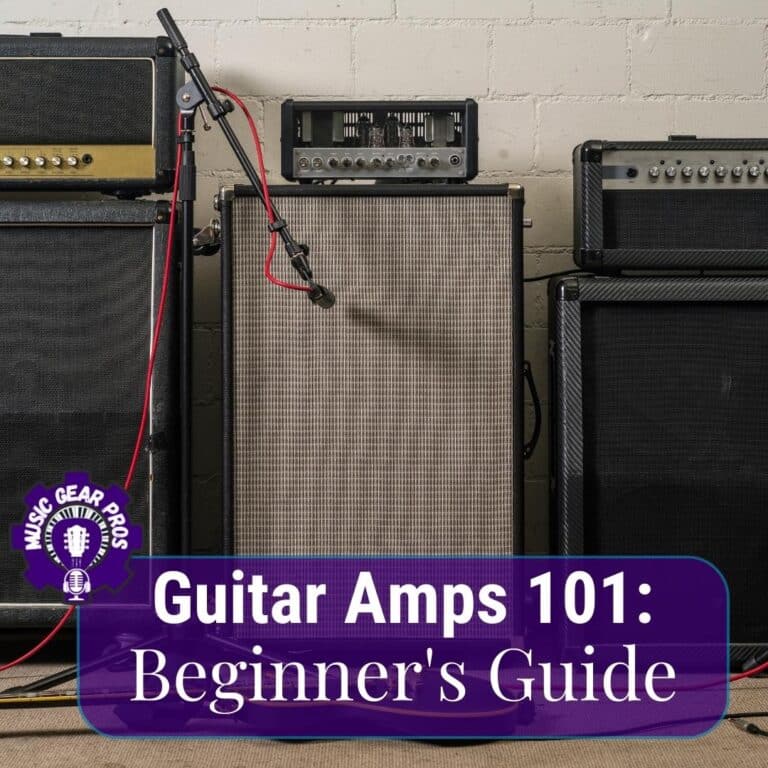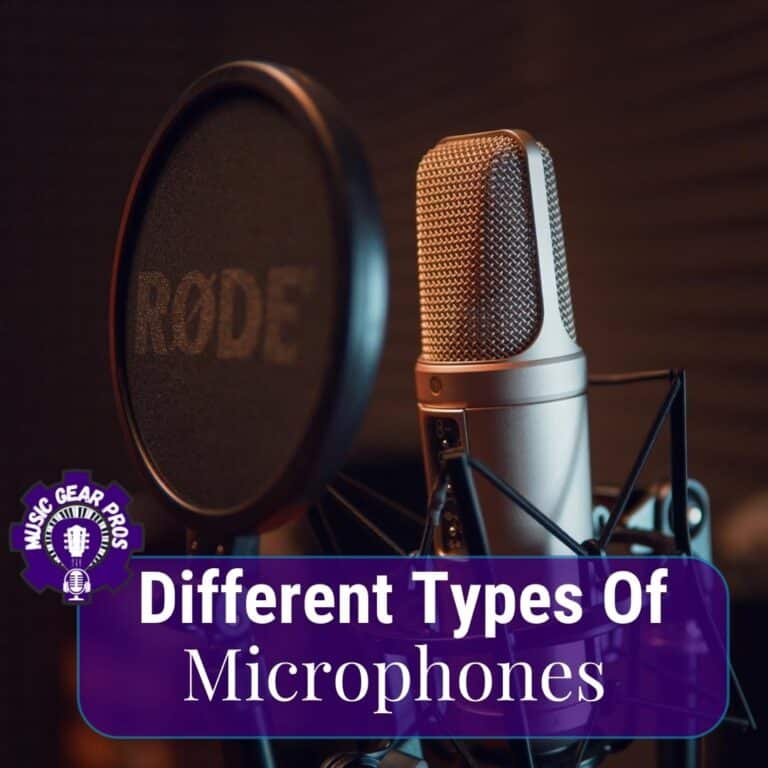Guitar Strings: Which Ones Do You Use?
Curious about the various types of guitar strings out there? We’re here to help! In this article, we’ll explore the different materials, gauges, and winding techniques that can influence your guitar tone and playability. Let’s get started!

My fellow guitarists! 🎸 If you’ve ever found yourself overwhelmed by the sheer variety of guitar strings on the market, you’re not alone. With so many options, it can be challenging to know which strings are right for you and your guitar. That’s where we come in! In this article, we’ll break down the most common types of guitar strings, their characteristics, and their ideal applications.
By the end of our journey, you’ll have a better understanding of which strings to choose for your unique playing style and sound. So, let’s dive right in!
Don’t want all the details? Here is a quick reference!
- Material
- Steel & Nickel-Plated Steel: Bright, crisp tone (Electric)
- Bronze & Phosphor Bronze: Bright, clear tone (Acoustic)
- Nylon: Warm, mellow tone (Classical)
- Gauge
- Light: Easier to press down, delicate sound
- Medium: Balanced tone and feel, versatile
- Heavy: Fuller, robust tone, suitable for lower tunings
- Winding Technique
- Roundwound: Bright, clear tone with bite
- Flatwound: Smooth feel, darker, mellow tone
- Halfwound (Groundwound): Balance between roundwound and flatwound
- Tapewound: Smooth, comfortable feel, warm tone
- Coated vs. Uncoated
- Coated: Longer lifespan, reduced finger noise, smoother feel
- Uncoated: Traditional tone and feel, natural sound
Guitar Strings Breakdown:

Material
a. Steel and Nickel-Plated Steel
Steel strings are a popular choice for electric guitars due to their bright, crisp tone and excellent sustain. Nickel-plated steel strings, on the other hand, offer a slightly warmer, more vintage sound. Some popular examples include Ernie Ball Regular Slinky and D’Addario EXL110.
b. Bronze and Phosphor Bronze
Bronze strings are commonly used for acoustic guitars because of their bright, clear tone. Phosphor bronze strings, which are made with a small percentage of phosphor, deliver a warmer, slightly mellower sound with a longer lifespan. Popular examples include Martin Authentic Acoustic and Elixir Nanoweb Phosphor Bronze.
c. Nylon
Nylon strings are the go-to choice for classical guitars. They produce a warm, mellow tone that is well-suited for classical and flamenco music. Some well-known examples include D’Addario Pro-Arte and Savarez Alliance.
Gauge
a. Light Gauge
Light gauge strings are thinner, making them easier to press down and bend. This makes them a popular choice for beginners, players with a lighter touch, or those who prefer a more delicate sound. Examples include Ernie Ball Super Slinky and D’Addario EJ16 Light.
b. Medium Gauge
Medium gauge strings offer a balanced tone and feel, making them a versatile choice for many players. They provide more volume and sustain than light strings, making them suitable for a variety of playing styles. Examples include Ernie Ball Regular Slinky and D’Addario EJ17 Medium.
c. Heavy Gauge
Heavy gauge strings are thicker and provide a fuller, more robust tone. They’re ideal for players with a heavier touch, those who tune down, or those looking for maximum volume and sustain. Examples include Ernie Ball Power Slinky and D’Addario EJ18 Heavy.
Winding Technique
a. Roundwound
Roundwound strings are the most common type of guitar string winding. They have a bright, clear tone with a slight “bite” that many players find appealing. Examples include Ernie Ball Regular Slinky and D’Addario EXL110.
b. Flatwound
Flatwound strings have a smoother feel and a more mellow, darker tone. They’re popular among jazz guitarists, as well as those who want to reduce finger noise. Examples include D’Addario Chromes and Thomastik-Infeld Jazz Swing.
c. Halfwound (Groundwound)
Halfwound strings, also known as groundwound or pressurewound strings, offer a balance between the brightness of roundwound strings and the smooth feel of flatwound strings. They’re an excellent option for players looking for a versatile, comfortable string. Examples include D’Addario Half Rounds and GHS Pressurewound.
d. Tapewound
Tapewound strings feature a nylon or metal tape wrapped around the string’s core, providing a smooth, comfortable feel and a warm, mellow tone. These strings are popular among bass players, but they can also be found for guitars. Examples include La Bella White Nylon Tapewound and Fender Nylon Tapewound.

Coated vs. Uncoated
a. Coated
Coated strings have a thin layer of polymer or other material applied to the string’s surface to protect against corrosion and wear. This coating can extend the string’s lifespan, reduce finger noise, and provide a smoother feel. However, some players find that coated strings lose some of their brightness and sparkle. Examples include Elixir Nanoweb and D’Addario XT.
b. Uncoated
Uncoated strings offer a more traditional, unaltered tone and feel. While they may not last as long as coated strings, some players prefer their natural sound and response. Examples include Ernie Ball Regular Slinky and Martin Authentic Acoustic.
What’s Next?
We will leave the different brands for another article. I think you have enough to process for now!
We’ve covered the most common types of guitar strings, their materials, gauges, winding techniques, and coatings. Now you’re better equipped to choose the perfect set of strings for your playing style, guitar, and sound preferences. Remember, there’s no one-size-fits-all answer when it comes to guitar strings – the best choice for you will depend on your unique needs and tastes. So, experiment with different types of strings, and enjoy the journey of discovering your ideal tone. Happy strumming! 🎸🎶







